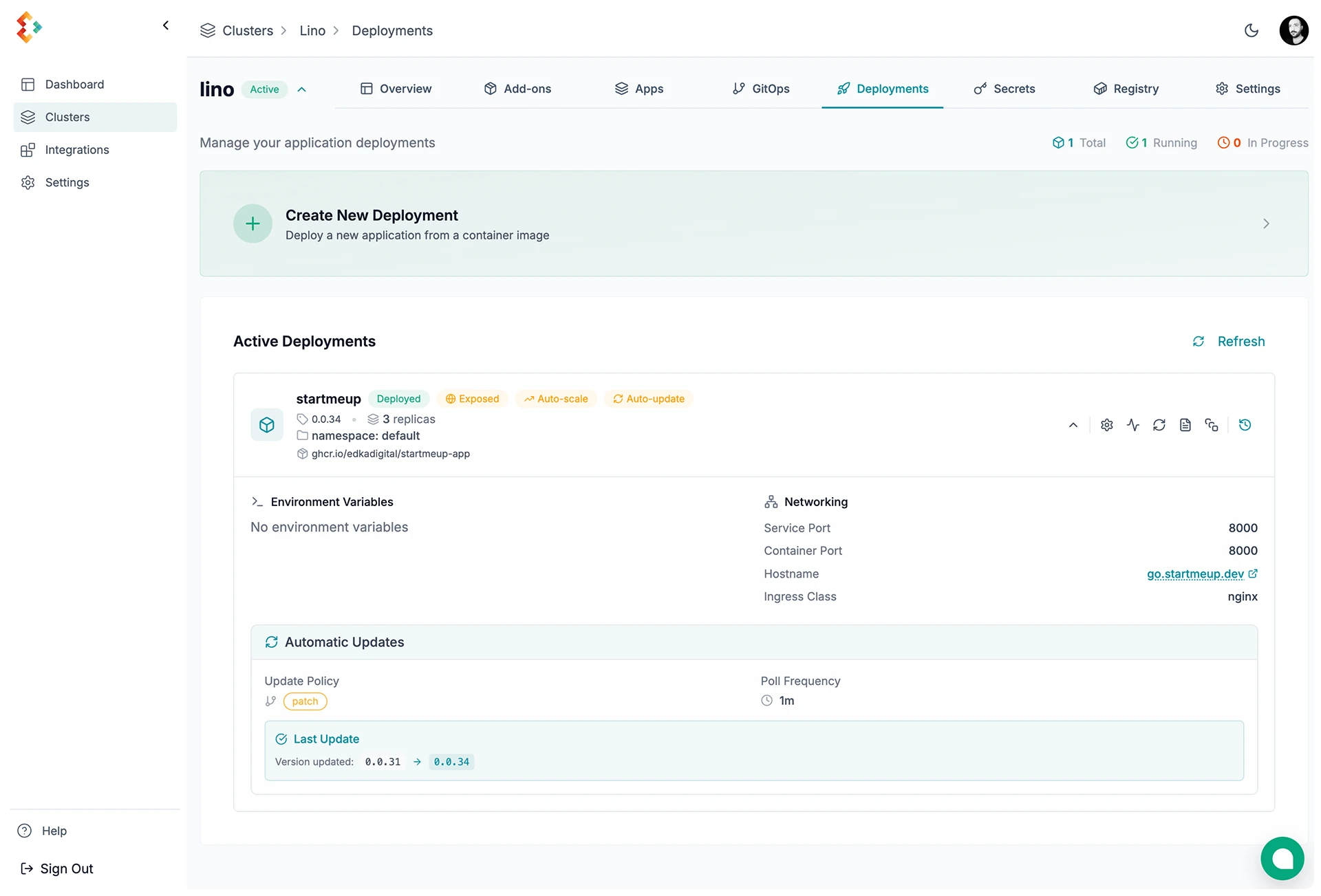Kubernetes Deployments Management
Deploy containerized applications to Kubernetes with Edka.
Create a Deployment
Basic Configuration
Set the core deployment settings.
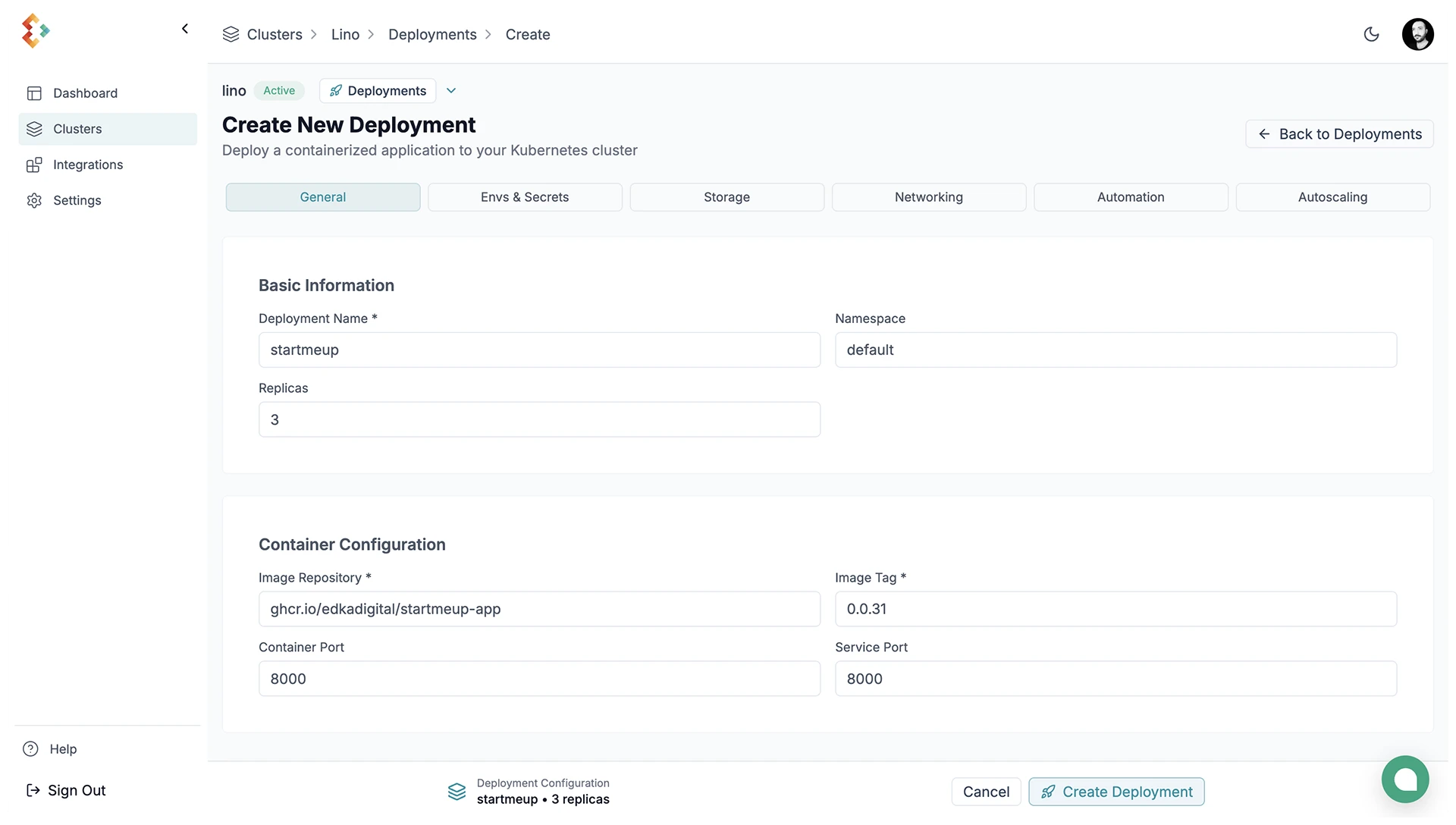
- Name: Deployment name
- Namespace: Kubernetes namespace
- Replicas: Number of pods
- Image repository: Container image source
- Image tag: Version to deploy
- Container port: Port exposed by the container
Environment Variables and Secrets
Add configuration and sensitive values.
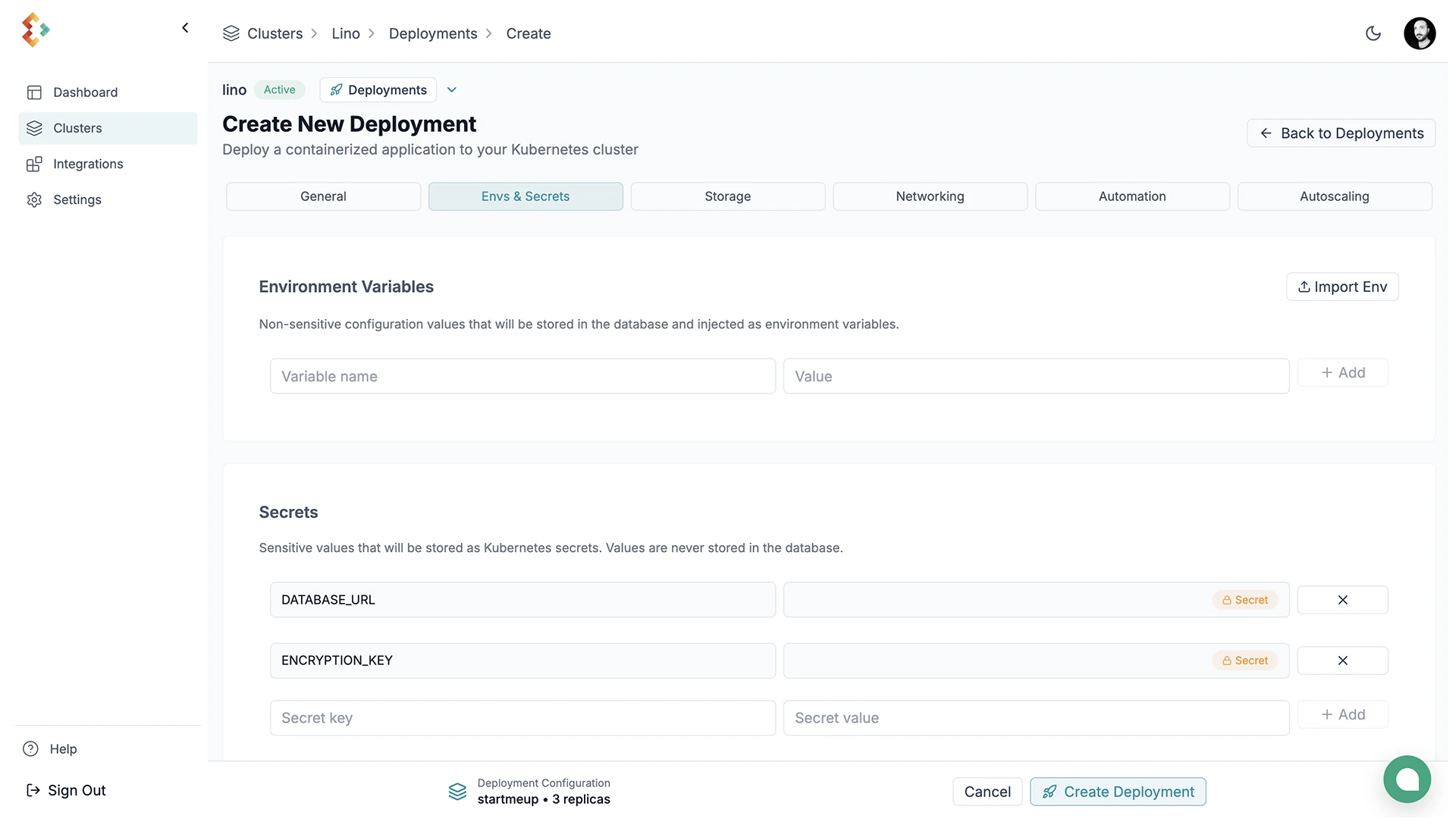
- Environment variables: Non-sensitive key-value pairs.
- Secrets: Stored as Kubernetes Secrets in your cluster and exposed to the deployment as env vars. Values are write-only in Edka; update by submitting a new value.
Edka allows importing values from .env, JSON, or YAML, or add them individually. Edka will validate and assigns them as environment variables or secrets.
Storage
Choose a storage type.
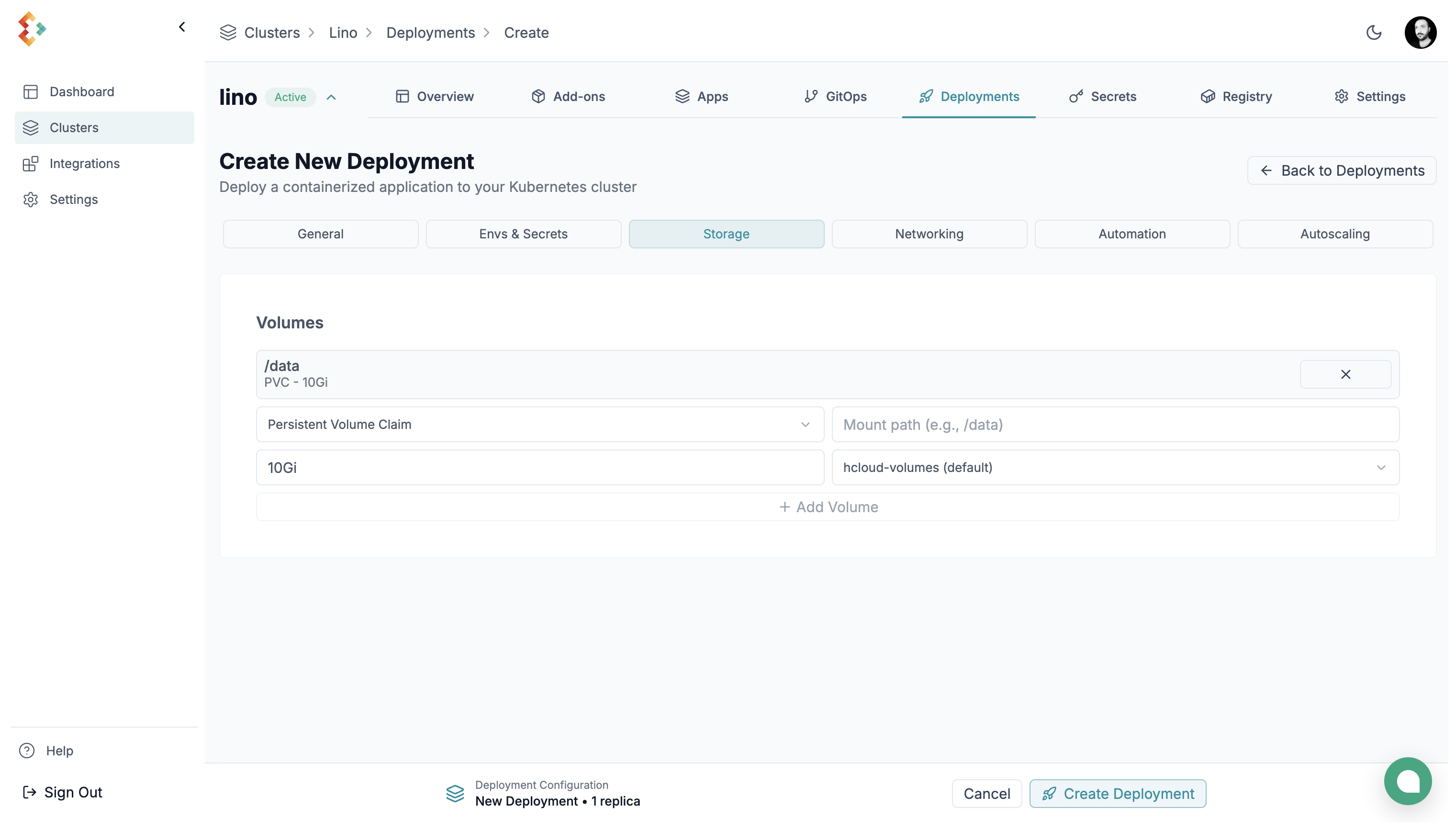
You can choose between:
-
Persistent Volume: Persistent block storage attached to a node. Survives restarts and rescheduling. Size range: 10GB–10TB.
-
EmptyDir: Ephemeral storage that lasts for the pod’s lifetime only.
Networking
Expose your app via an Ingress controller. Install the NGINX Ingress Controller from the Add-ons tab.
Point your DNS records to the ingress controller (or use a wildcard record). If you use a defaul twildcard certificate on the controller, that covers the configured domain for the deployment, you can leave TLS off; the default certificate will be used.
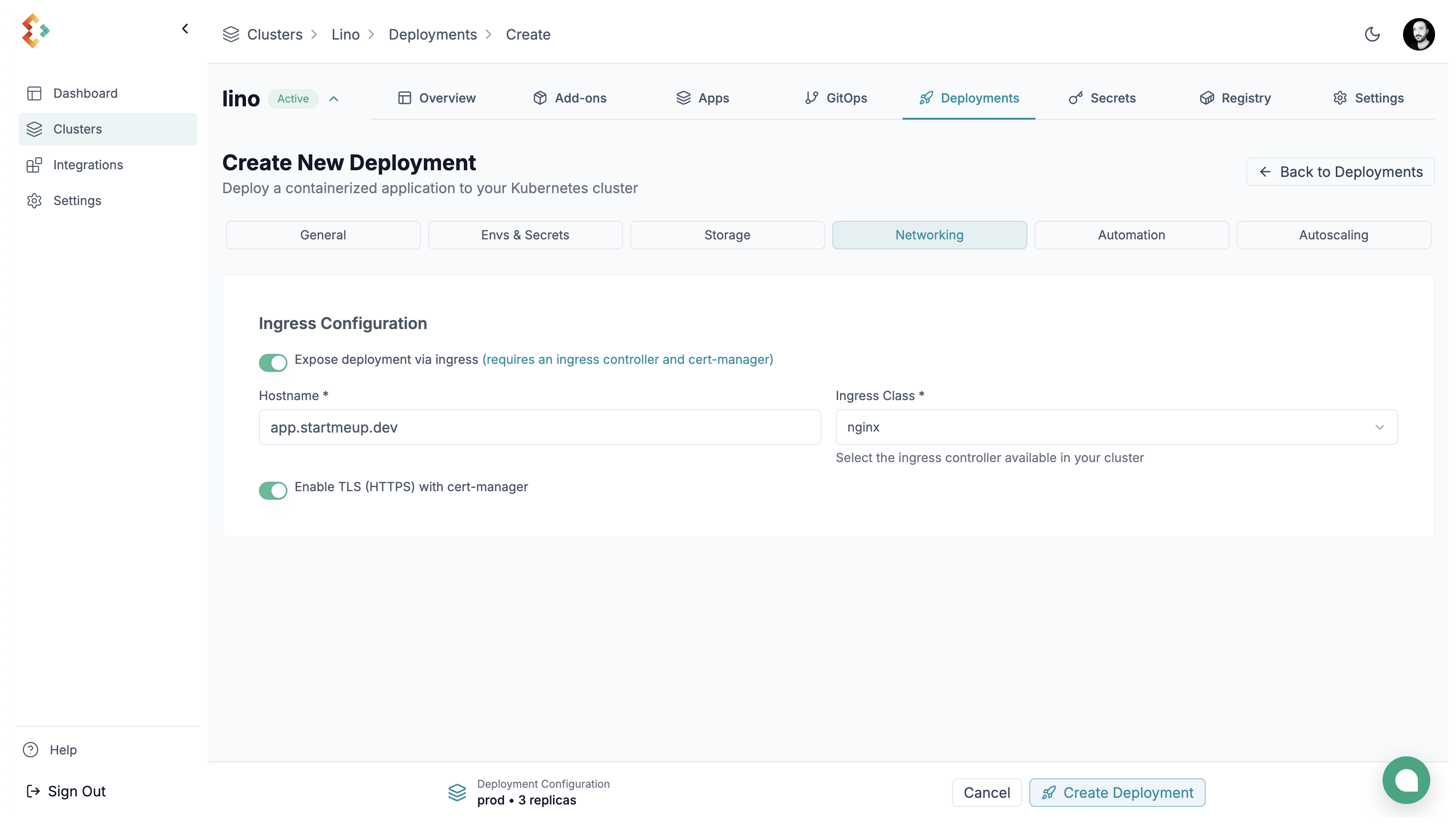
Automation
Automatically roll out new images using SemVer policies when a new image is pushed.
Policies:
- all: Update on any bump or prerelease (e.g., 1.0.0 → 1.0.1-rc1)
- major: Allow major, minor, and patch updates
- minor: Allow minor and patch updates; block major
- patch: Allow patch updates only
- force: Update even for non-SemVer tags (e.g.,
latest). Optional: set labelkeel.sh/match-tag=trueto restrict updates to the same tag only. - glob: Use wildcards to match versions (e.g.,
1.2.*)
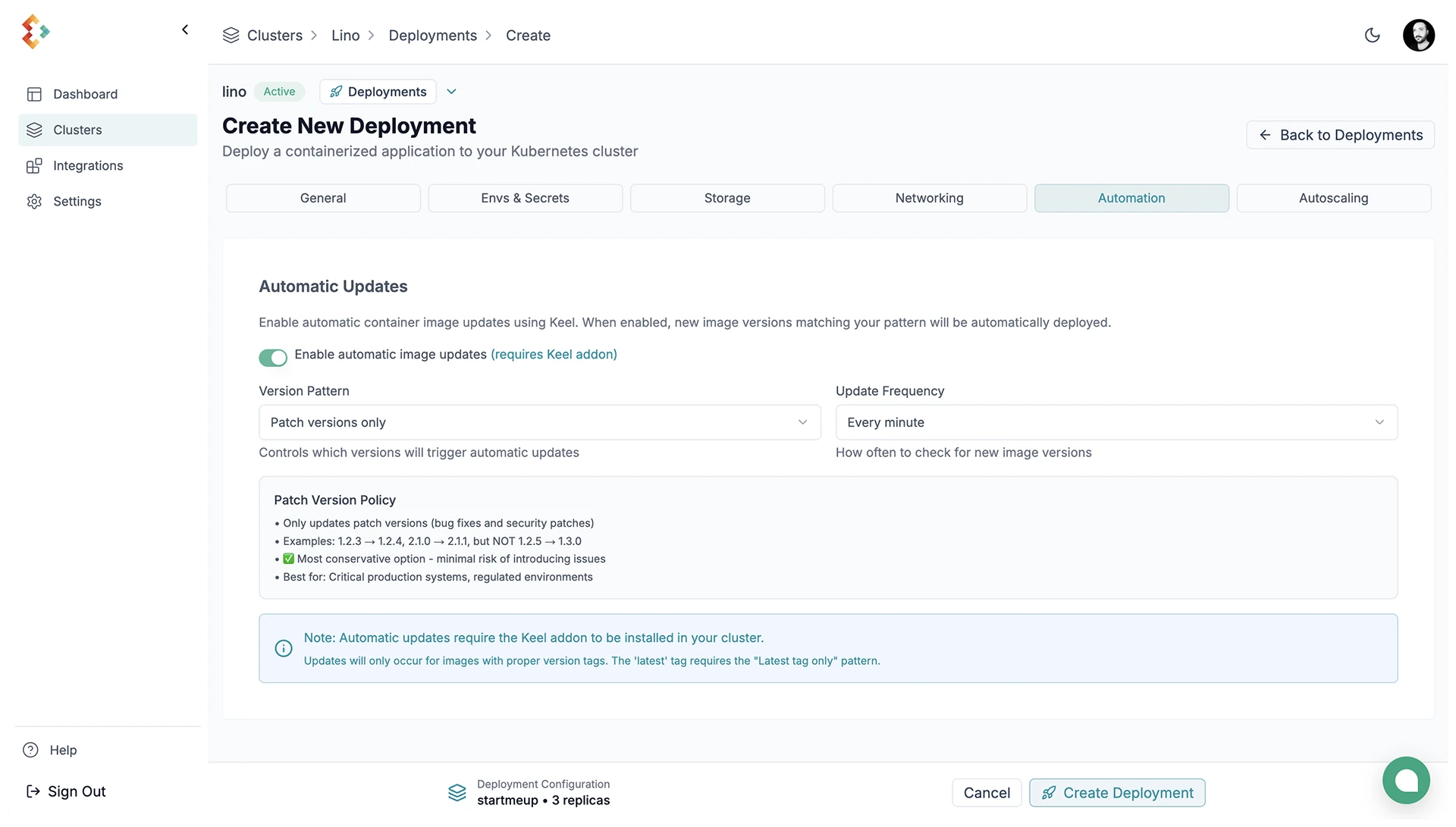
Autoscaling
Enable a Horizontal Pod Autoscaler and choose metrics and target values to scale your deployment automatically.
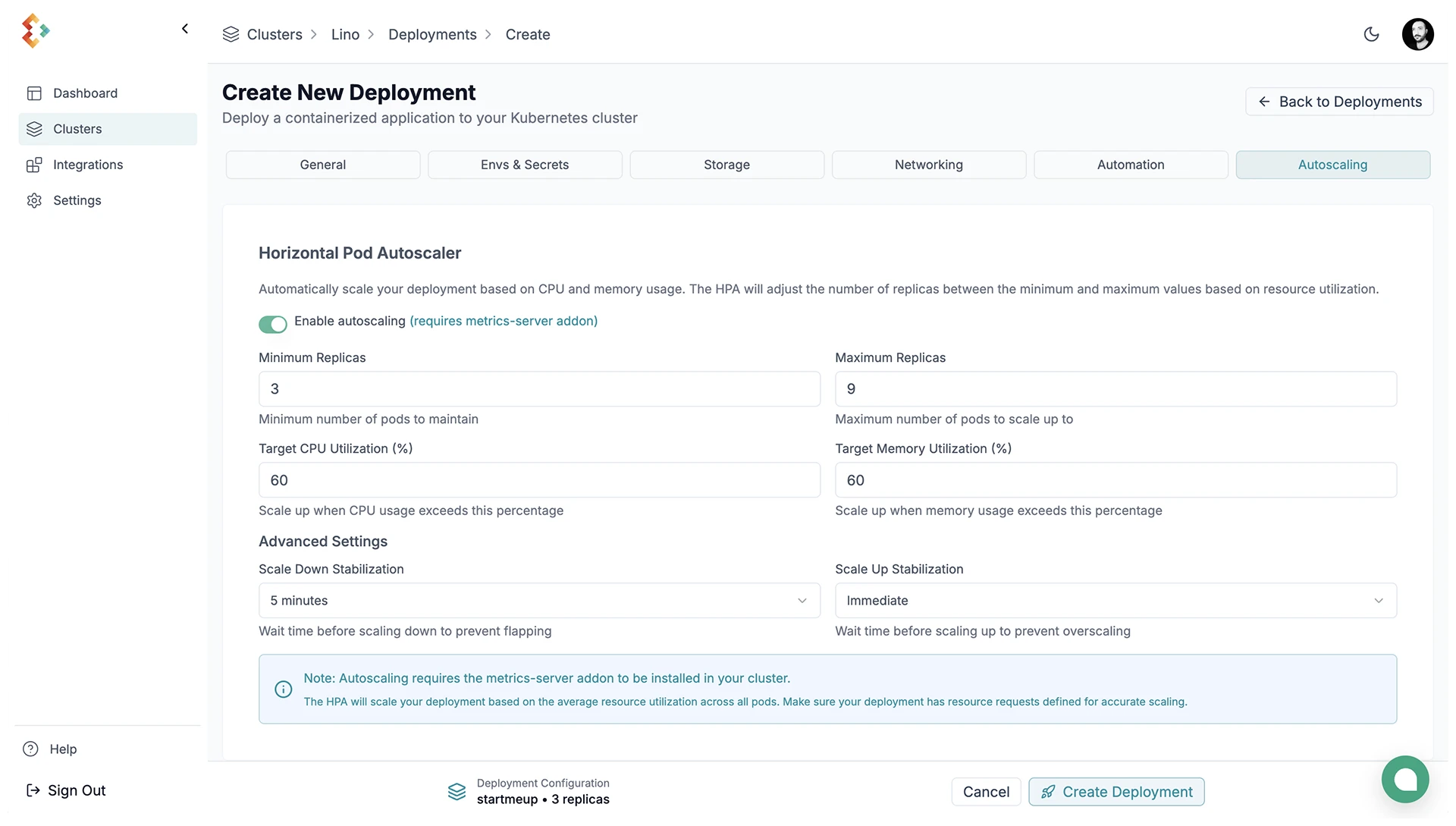
Rollback
Restore a previous revision from the deployment actions menu.
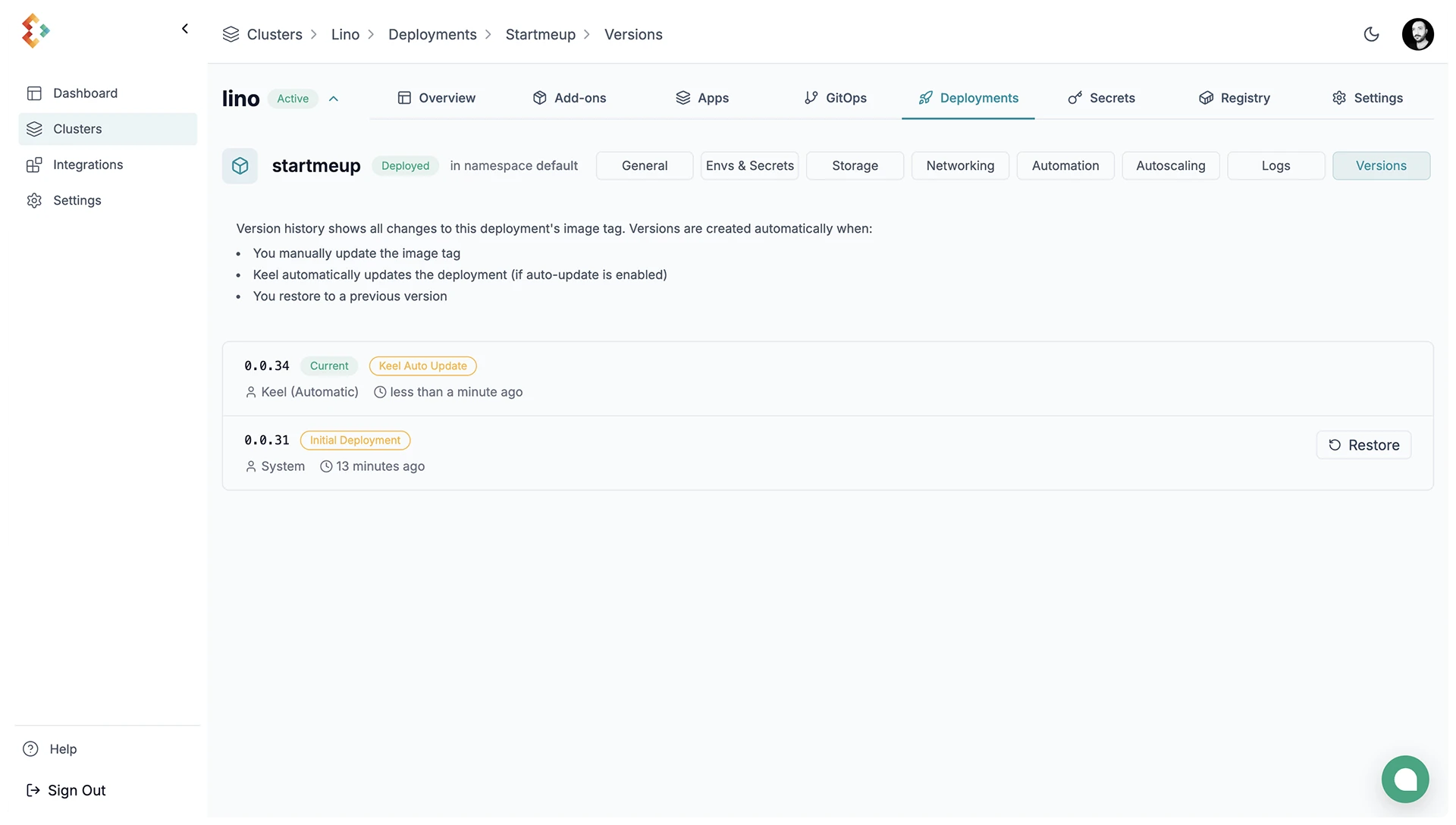
Logs
View the logs for your deployment from the deployment details dropdown.
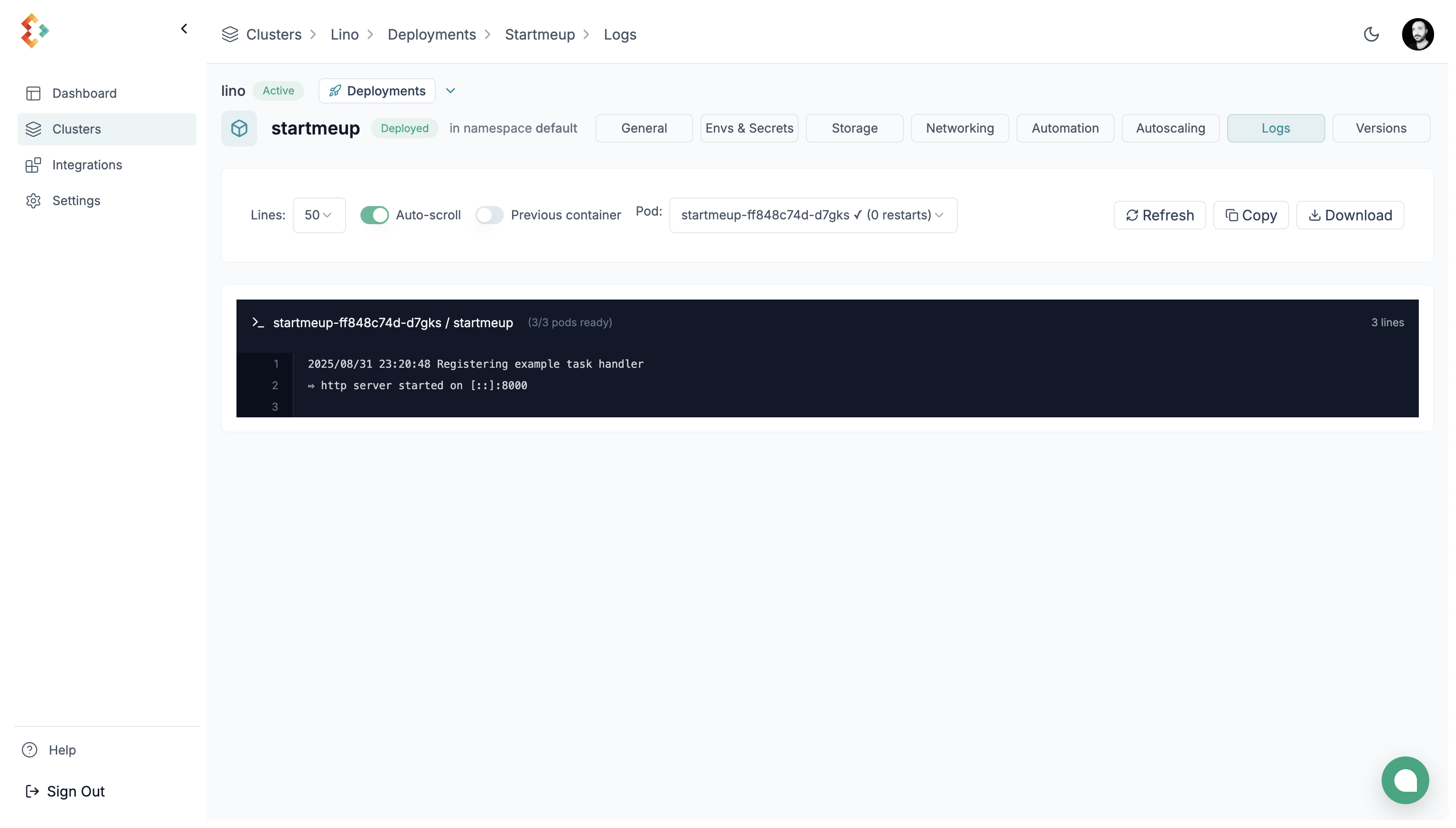
Deployment Details
Details of your deployment are viewable from the deployment details dropdown.
